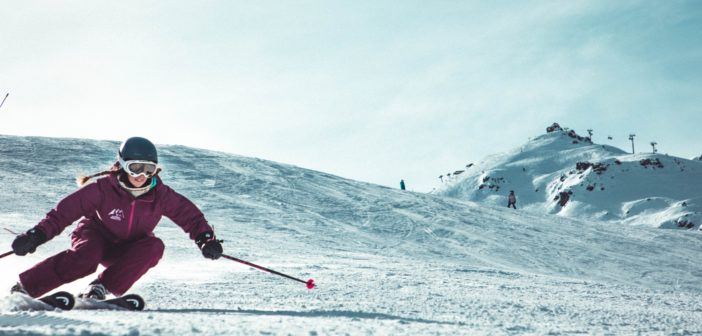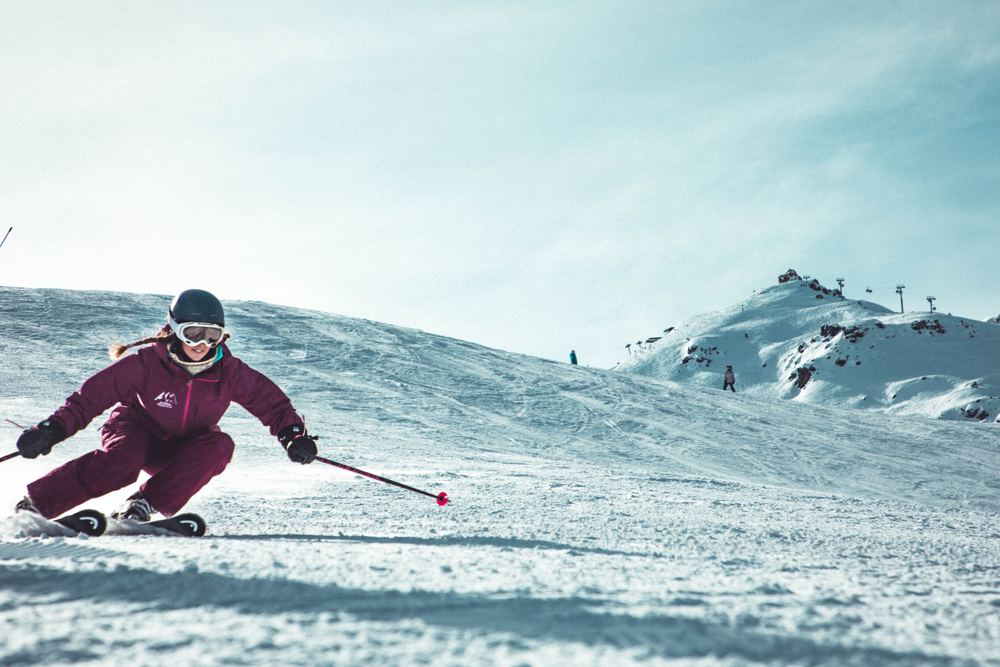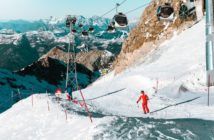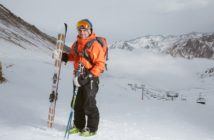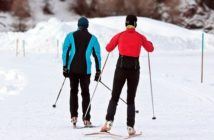Doing too much of the same thing over and over again can get boring – fast. Even a thrilling activity like skiing can get old if you shred down the same slopes every time you go to your favorite resort.
If you’re after some new thrills, then maybe you should try out a new way of skiing altogether.
New types of skiing come in a wide range, and you can learn to use a bunch of different types of skis to spice up your next trip!
Contents
Alpine Skiing
Alpine skiing, or downhill skiing, is by far the most popular method you can try out.
It’s basically the type of skiing you normally see at your typical ski resort, where you ride up a chairlift, gondola, button lift, or some other means to reach the top of a mountain and then ski down the carefully groomed slopes.
Most skiers first learn to ski this way. Of course, with every resort being neatly divided into mountains of different experience levels, and offering both in-house skiing schools and ski hire shops, it only makes learning to alpine ski all the easier for novices and experts looking to hone their skills alike.
Alpine Skiing Equipment
If you want to try alpine skiing, you need to use skis with fixed-heel bindings, which are basically boots attached directly to the ski itself, fixed at the toe and the heel.
In a fall, these bindings automatically eject the boot from the ski, so as to prevent any serious leg injuries.
Types of Alpine Skiing
While alpine skiing is the most common form of skiing, that doesn’t mean it’s the only way to enjoy this sport!
However, what other skiers may or may not intuitively know is: Many other types of skiing have branched out and evolved from alpine skiing alone.
In fact, numerous other types of skiing on this list utilize some of the same techniques and even similar equipment to those who love to alpine ski. For instance, there is a style of backcountry skiing called alpine touring, or AT for short.
You need to use special bindings that can easily switch between a free-heel mode (typically reserved for cross-country, Telemark, or ski jumping) and the fixed-heel mode that alpine skiers are accustomed to, so that you can ascend slopes with your heels unlocked.
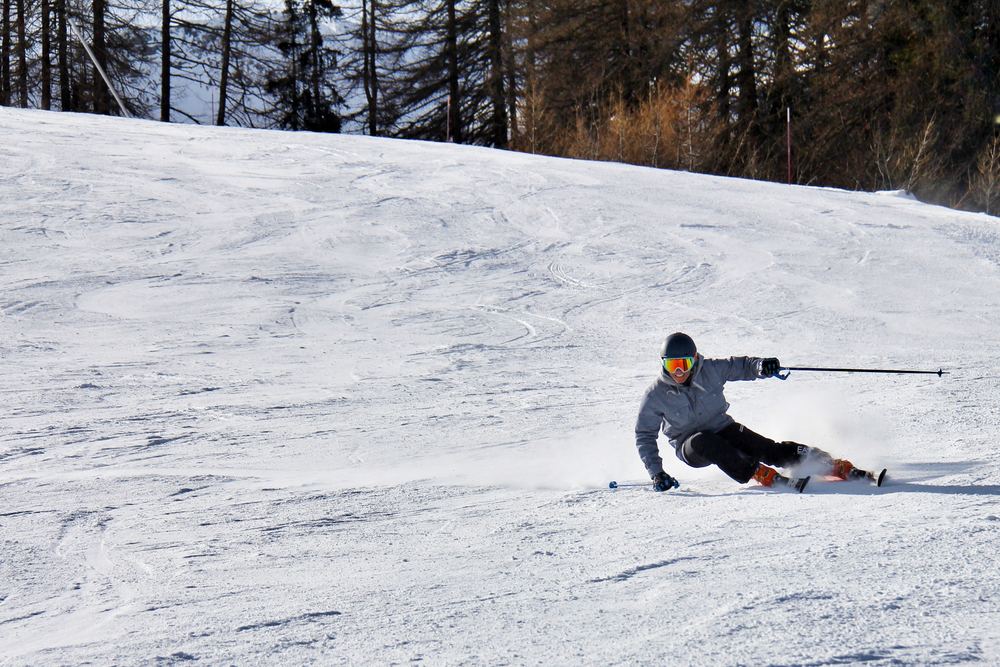
Freestyle Skiing
Freestyle skiing, also known as freeskiing or jibbing, is a relatively new style that allows for far more play and experimentation than other types of skiing.
This is because this skiing method is primarily comprised of stylish aerial flips and spins, as well as moguls, cross, half-pipe and slopestyle, and even sliding along rails and boxes on your skis.
Any general turns or tricks you may want to try on your skis count as freestyle skiing.
Because of its generally flashy nature, it has also become a highly competitive sport, showcased in both the Winter X Games and Winter Olympics competitions.
These daring athletes compete in various disciplines including aerials (which are jumps), acro (which is a highly choreographed ski routine), moguls (which are bumps located along the slopes that are skied on and jumped over).
There’s also big air (which are stylish twists, spins, or other positions or tricks done in the air), and dual moguls (which is where two competitors race head-to-head on the moguls).
Freestyle skiers often practice at downhill ski resorts, where the terrain is molded specifically for this style. This prepares them for future competitions or can be used just for fun.
Freestyle Skiing Equipment
If you want to give freestyle skiing a try, you should decide which freestyle discipline you want to master first.
Slopestyle and halfpipe skiers need to use skis with alpine bindings and twin tips. These ski tips are turned up in such a way to allow skiers to go both backwards and forwards as they please.
Mogul skis are typically used in mogul competitions, as well as in some aerial competitions. If you are interested in ski cross, however, you will need to use specially designed racing skis instead.
Backcountry Skiing
Backcountry skiing is basically skiing outside the patrolled boundaries of your typical ski resort. It may also be referred to as off-piste skiing.
Keep in mind that this type of skiing is only for expert-level sportsmen. You need to be properly equipped and trained for any sort of disaster to strike, whether it be avalanches or finding yourself stranded on a separate mountain far off the nearest resort.
You can ski down these unmarked tracks with or without a guide, though having a guide is usually recommended. These guides can help teach you how to hike up these steeper mountains before you ski down lines you choose for yourself.
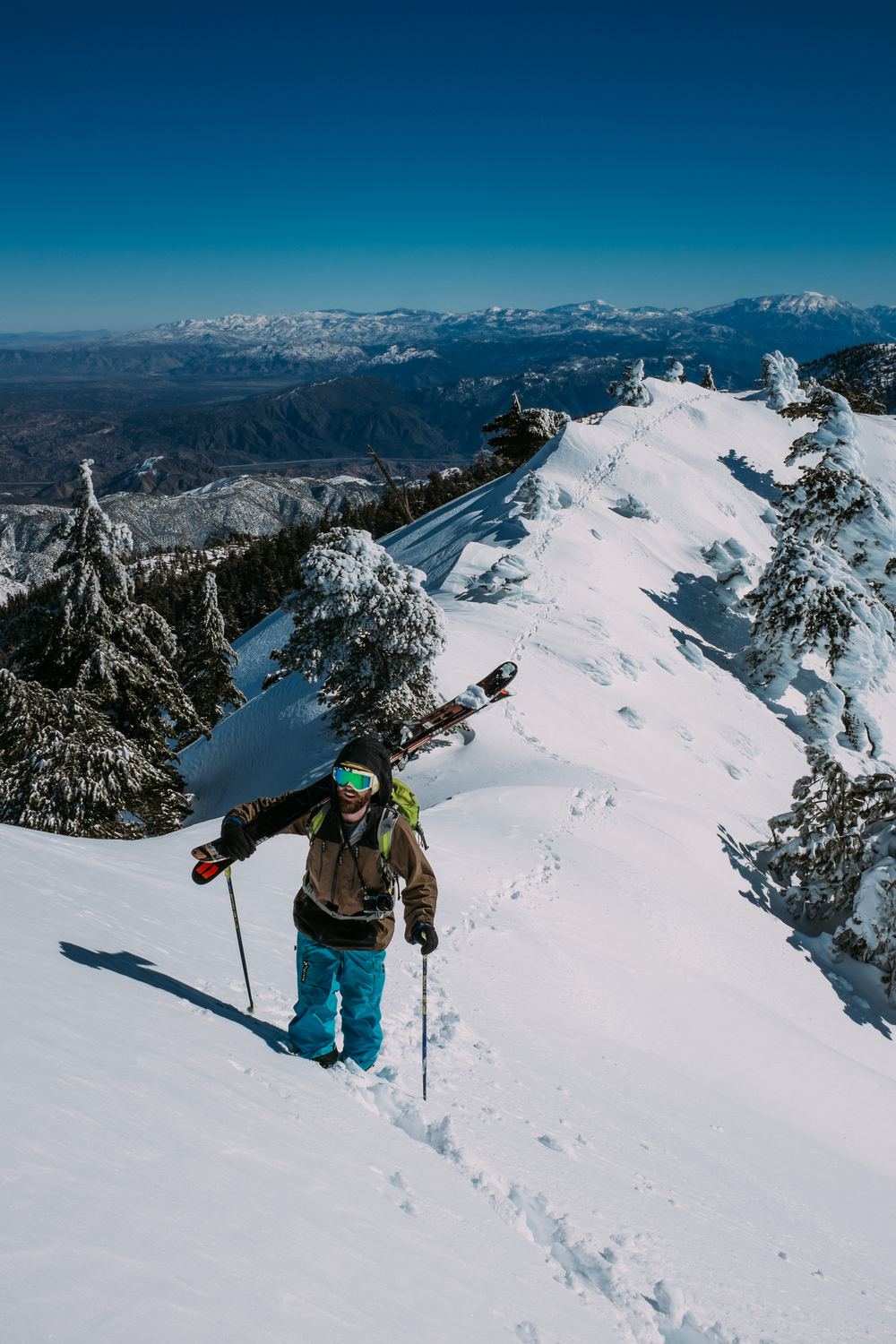
Ski touring (sometimes called alpine touring, or AT for short) and long-distance ski-touring hut-to-hut are some of the most popular branches of backcountry skiing that require a guide.
To hike to the top of these mountains, some backcountry skiers use resort chairlifts to get high up before hiking further outside the resort to ski. Heli-skiing is another method that backcountry skiers use to reach these difficult-to-access regions, which involves – as you may have guessed – a helicopter.
Keep in mind that, when you reach the mountain’s peak as you’re alpine touring, you need to remove your climbing skins, lock your heels back down, and descend using parallel turns, just as you would when normally alpine (or downhill) skiing.
Backcountry Skiing Equipment
Backcountry skiers use climbing skins and alpine touring (or tech) bindings with a free-heel feature on their special backcountry skis.
This lets them ski or hike both uphill and back down again. These climbing skins easily attach to the base of your skis, so as to grip the snow as you ascend the mountain.
The ski bindings also allow the heel to remain free while the toe stays attached, which makes it easier to walk or hike in your skis.
You may also choose to use the standard downhill equipment if you are more comfortable with that. Instead of using climbing skins to hike up the mountain, however, you will need to ride a chairlift up a marked mountain and then simply leave the ski resort’s boundaries.
Mountains that are a part of the resort may be called side-country or slackcountry, due to their accessibility.
Of course, if you want to skip the hike up entirely, you can just carry your skis and go cat- or heli-skiing instead.
No matter what type of equipment you use in the end, you’ll still need to bring avalanche safety equipment – just in case.
Off-Piste Skiing
As stated above, off-piste skiing is basically when you ski on higher slopes that are out of a resort’s usual jurisdiction. It can be quite dangerous, even if you know what you’re doing.
Still, this type of skiing is easily one of the more scenic varieties. You can choose to either follow a backcountry ski tour that some ski resorts will offer, or go out and explore the unmarked regions for yourself.
Here’s a video explaining more about off-piste skiing.
Cross-Country Skiing
Cross-country skiing, also known as XC skiing or ski touring, is perhaps the strangest type of skiing that most people wouldn’t even consider a sport.
Rather than sliding down a downhill slope, cross-country skiing requires you to traverse across relatively flat terrain.
Though this may appear simple enough, it will test your physical and mental endurance, all while you glide through nature.
History
This is because cross-country skiing relies solely on your own strength to move across the snow-covered terrain, rather than using ski lifts or gravity to help you.
It is practiced as a sport, a recreational activity, a workout, and even as a means of transportation.
It first emerged as a mode of transportation in Norway, when other ways to travel were scarce; as such, it’s also referred to as Nordic skiing.
With that in mind, this type of skiing is more than a sport; it was a means for survival and travel. It was only about 1,000 years ago that this method of transportation began to be seen as a recreational sport as well.
Today, cross-country skiing is practiced in many snow-covered countries and regions all over the globe, including Northern Europe, Canada, Russia, the United States, Australia, and New Zealand.
You can cross-country ski across a wide variety of terrains, which can include anything from mountainous regions to groomed courses specifically designed for cross-country skiing.
Modern Techniques
Modern cross-country skiing techniques are quite like the techniques one might use for alpine skiing, ski jumping, and Telemark skiing.
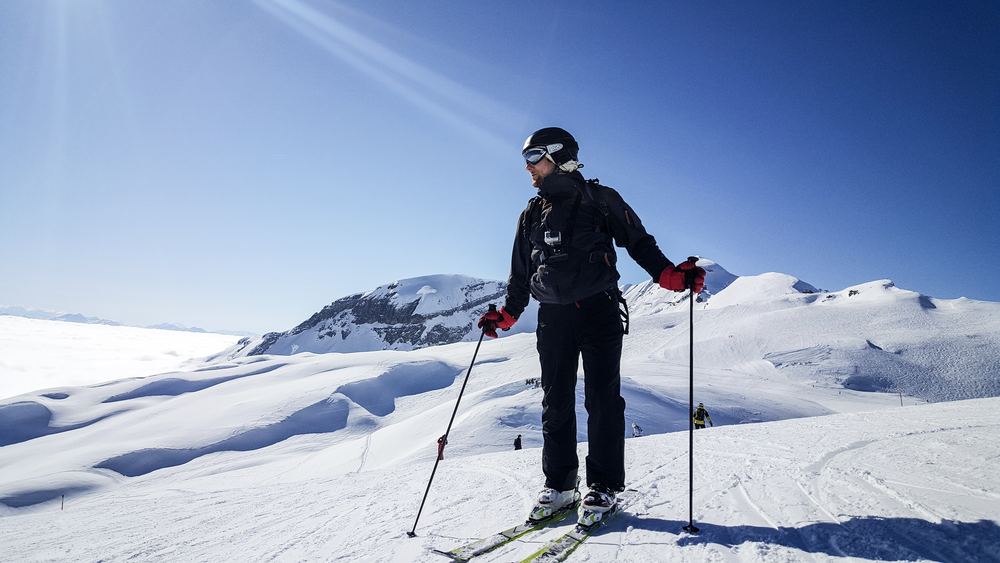
Cross-country skiers propel themselves forward by striding or moving side-to-side in a skating motion while pushing their ski poles against the snow.
This striding motion is made through gliding or pushing straight ahead, while the skating motion involves a V shaped glide, similar to those that ice skaters or roller skaters would use.
Competitive Use
Competitive cross-country skiing is practiced in nearly every snowy region of the world. In Norway, for instance, athletes often compete in a biathlon consisting of both cross-country skiing and rifle marksmanship.
Over in America, there is an annual 50-kilometer cross-country race known as the American Birkebeiner race, or “The Birkie” for short, held in northern Wisconsin.
Ski-orienteering is a niche form of cross-country skiing that requires you to know how to navigate a landscape in the snow, as well as to make quick decisions on where to go while you race against other competitors.
Cross-Country Skiing Equipment
All the types of cross-country skis available are long and thin with a free-heel binding, rather than a fixed-heel binding.
This allows for easier movement across a flat surface. You then use your poles to push yourself along the ice or snow.
Ski orienteers also use standard orienteering maps with special green markings of trails and tracks, which help the orienteers stay on the right track on the snowy landscape.
These maps have other symbols that indicate whether any roads along the way are covered in snow or are clear of it. They also have a map holder attached to their chest.
This video tells you more information about cross-country skiing.
Telemark Skiing
Telemark skiing is a pretty niche type of skiing that is like an odd mixture of alpine skiing and cross-country skiing.
You ski down a marked slope like in alpine skiing, but instead of having a fixed-heel binding, you use the free-heel bindings of cross-country skiing.
This results in a new method of turning where you lunge forward in a way that puts your forward leg in a bent-knee position.
This requires you to be familiar with the more technical aspects of skiing, which can present a whole slew of new challenges for expert skiers who are tired of regular alpine skiing or backcountry skiing.
While some Telemark skiers are comfortable practicing on ski resort’s slopes, others may want to practice on backcountry slopes instead.
History
This type of skiing was first made popular by Norwegian skier Sondre Norheim, in 1868.
Nowadays, many younger skiers seek out the thrills that Telemark skiing offers over the more normal kinds of alpine or even backcountry skiing.
Telemark Skiing Equipment
Telemark skis are very much like alpine skis, since they both use leather ski boots and three-pin binding. Some Telemark skiers also use cable binding and hinged plate binding.
Of course, you will need to have skis with some kind of free-heel binding to allow for the lunging turns you will perform on the slopes. Most Telemark skiers use special backcountry skis, even if they are skiing on the resort.
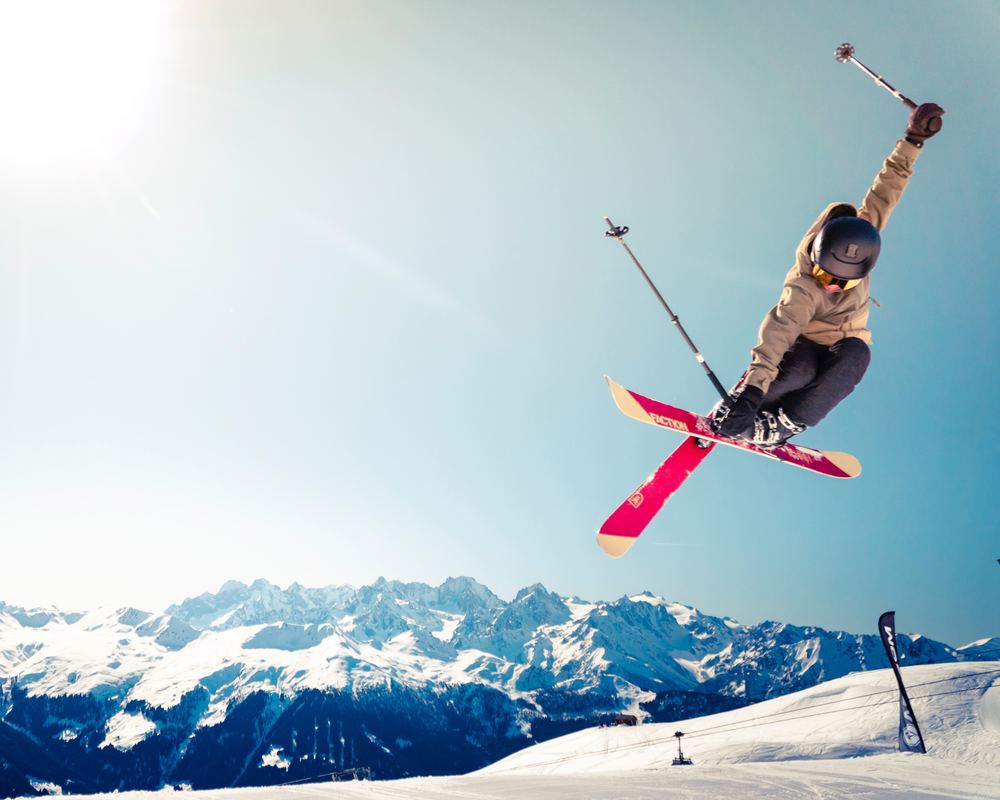
If you do decide to Telemark ski in the backcountry, you will also need the right climbing skins and avalanche safety equipment.
You will need to be properly trained to handle potential avalanche situations as well.
Conclusion
No matter what skiing style you’re good at, there are always new styles for you to master as well.
Hopefully, this comprehensive list of skiing types has sparked new interest in the sport for you. Try them out yourself – you could find a new obsession!
What are your favorite types of skiing?

